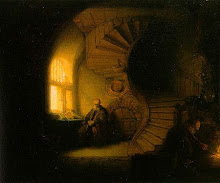We ran down on Westlake today past all the small businesses by the lake and passed a dinghy near the entrance to the Discovery Yachts marina that had been repurposed as a planter and was full of white alyssum and purple petunias. It was a hot afternoon, in the lower 70s. Not a searing heat, but enough to make you thirsty and induce a sweat. I couldn’t help notice the high number of morbidly obese people I saw on the walkway and elsewhere. I wonder if that’s due to the diminishing nutritional value of our food. In agricultural research, measurements of fruits and vegetables show that their minerals, vitamin and protein content has dropped significantly over the past 50 to 70 years. Industrialized farms have been breeding and choosing crops for higher yields, rather than nutrition, and high-yielding crops - be it broccoli, tomatoes, or wheat – tend to be less nutrient-packed. People tend to eat more when they’re depressed or anxious. Food is comforting. Unless, of course, you’re so depressed you don’t want to eat at all. I had two hot dogs for dinner. This makes it obvious that nutrition isn’t always at the forefront of my appetite. I don’t mean to slight the hot dog, which is a mystifyingly satisfying meal, especially if your attention is distracted by something else, in this case episode 113 season 7 of Jerry Seinfeld, titled “The Maestro,” in which Elaine dates a conductor who insists on being called ‘maestro.’ I once passed Gerard Schwarz - Seattle’s symphony conductor from 1985 to 2011 - when I was out running. Mr. Schwarz was working on a car and I cracked a joke about him conducting cars which, to gather from his facial expression, was not entirely appreciated. I should’ve asked if he needed help. Albeit, I know less about cars than I do about a single musical instrument, including the lowly triangle. As for conducting cars, in the mid-70s I attended a concert by John Cage at Seattle’s Cornish College of the Arts who ended the concert by taking everyone out into the parking lot and conducting a row of cars. People sat inside the cars and were instructed – via Cage’s conducting - to turn the volume of the car radio up or down. This constituted the music of the piece, which is titled “Imaginary Landscape no 4 for 12 Radios.” The introduction of cars may have been a new development. I remember the frustrations of listening to AM radio when driving a car in the 60s and 70s; most of the songs were of no interest to me. They were most often saccharine, formulaic, and tame. Then, just when you thought you couldn’t take another bubble gum masterpiece, the DJ would play something by the Beatles or Rolling Stones or Bob Dylan and I’d go nuts. The first time I heard “Like A Rolling Stone” was in late August, 1965. I was riding in the backseat of a friend’s car. He had a speaker in the back so I was immersed in music. As soon as the first drumbeat and chord were played, I was hooked. It was an exhilarating sound, and the lyrics blew my mind. It was at that exact moment I decided to write poetry. I wish I’d also begun guitar lessons. People hate poetry, but if it’s behind a steady backbeat and an electric guitar, they’ll listen.
Monday, July 25, 2022
Subscribe to:
Post Comments (Atom)


No comments:
Post a Comment